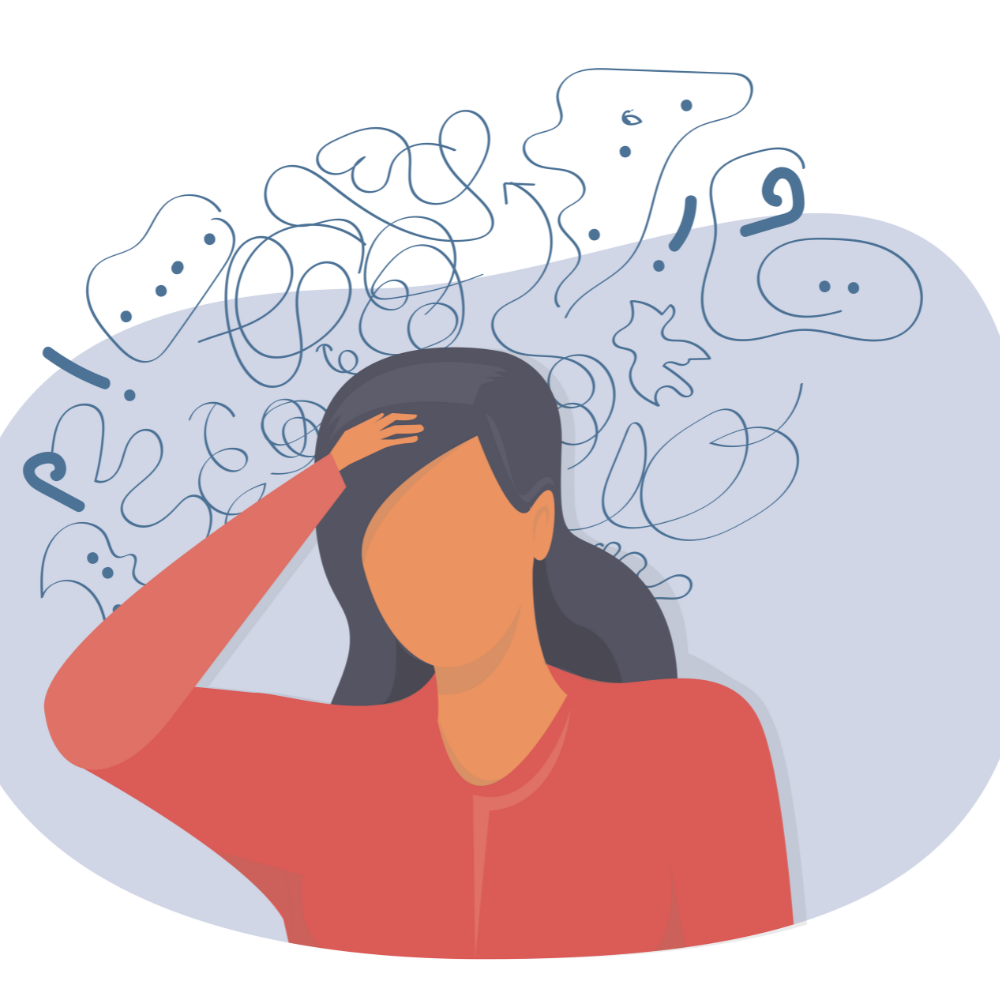Mental Mondays: All You Need To Know About Attention Deficit Hyperactivity Disorder (ADHD)

A creative writer with a voracious appetite for fashion, beauty,…
I
t’s hard to detect ADHD in our generation where people have short attention lifespans, but with careful observation, it’s easy to tell. ADHD simply means Attention Deficit Hyperactivity Disorder. It’s a problem with the brain that makes it hard to pay attention, stay still, and control your actions. For some, this problem can start in childhood and last into adulthood.
Considering the condition affects a person’s focus, active state, and behavioral control, individuals with ADHD may have trouble paying attention in school or at work, making decisions without acting too quickly, and may also experience anxiety, depression, and sleep problems. This can make everyday tasks and activities difficult.
Check out glaring symptoms of ADHD…
#1. Inattention

People with Attention Deficit Hyperactivity Disorder have trouble paying attention to details and may struggle to concentrate on tasks, even ones they find interesting or enjoyable. They may also have trouble staying organized, completing tasks, and following instructions.
Some signs of inattention in people with ADHD include:
- Easily distracted
- Forgetful in daily activities
- Struggles to finish tasks or projects
- Difficulty following instructions or conversations
- Misses important details and makes careless mistakes
- Has trouble paying attention in class or during meetings
- Avoids or dislikes tasks that require sustained mental effort
- Loses things often, such as toys, school supplies, or important documents
#2. Hyperactivity

Hyperactivity is one of the main symptoms of ADHD. This means a person with ADHD may have trouble sitting still, constantly fidgeting or squirming, and could seem like they have a lot of excess energy. They may also talk a lot and have trouble waiting their turn.
It’s important to remember that everyone acts this way sometimes, but for people with ADHD, these symptoms can be severe and interfere with their daily life. For example, they may have trouble in school or at work, or they may struggle to make and keep friends.
#3. Impulsiveness

This refers to an individual’s tendency to act without sufficient forethought, reflection, or consideration of consequences. Individuals with Attention Deficit Hyperactivity Disorder may have difficulty controlling their impulses, leading them to act impulsively in varying situations, such as interrupting others, speaking out of turn, or engaging in dangerous or reckless behavior. Impulsiveness can also manifest in spontaneous decision-making, such as impulse buying, changing plans frequently, or acting without thinking things through.
Remember that inattention is just one symptom of ADHD and that everyone experiences it differently. Some people with ADHD have primarily inattentive symptoms, while others have a combination of inattention and hyperactivity-impulsivity symptoms.
Causes of Attention Deficit Hyperactivity Disorder

The exact cause of ADHD is unknown, but a combination of genetic, environmental, and neurological factors is believed to play a role. However, some of the potential causes and risk factors of ADHD include:
- Genetics: ADHD tends to run in families, and research has identified several genes that are associated with an increased risk of developing the disorder.
- Brain structure and function: Research has found some structural and functional differences in the brains of individuals with ADHD. These include smaller brain regions related to attention and executive function and lower-than-average levels of certain neurotransmitters like dopamine and norepinephrine.
- Prenatal exposure: Exposure to toxins such as alcohol, tobacco smoke, or lead during prenatal development has been linked to an increased risk of ADHD.
- Early brain injury: Traumatic brain injury, particularly during early development, has been connected to this disorder.
- Environmental factors: Exposure to environmental stressors such as poverty, poor nutrition, or neglect can increase the risk of ADHD, especially when combined with genetic or neurological vulnerabilities. ADHD is a complicated condition and different people with ADHD may have various triggers. Note that this isn’t due to bad parenting or a lack of discipline, as people tend to blame themselves for these symptoms.
Diagnosis and treatment

To diagnose Attention Deficit Hyperactivity Disorder, a doctor will evaluate the individual’s symptoms and medical history. They may also perform tests to rule out other conditions that could cause similar symptoms.
Treatment for ADHD often includes a combination of medication, therapy, and lifestyle changes. Medication, such as stimulants, can help improve focus and reduce hyperactivity. In addition, therapy can help individuals with ADHD learn coping skills and manage their behavior. Lifestyle changes, such as a healthy diet, exercise, and structure, can also benefit individuals with ADHD.
Always remember what works for one person with ADHD may not work for another, and finding the right treatment often takes time and effort. It’s also vital to work closely with a doctor to monitor the effectiveness of the treatment and make any necessary adjustments.
How to cope with ADHD in daily life

- Make a to-do list: Write down tasks and deadlines to help you stay focused and on track.
- Take breaks: Regular breaks can help you recharge and stay focused. Try taking a 5-minute walk, or doing a quick stretching routine.
- Exercise regularly: Exercise can help improve your attention and focus, and also boost your mood and energy levels.
- Get enough sleep: Aim for 7-9 hours of sleep each night, and try to go to bed and wake up at the same time each day.
- Use technology to help: There are many apps and tools available that can help you stay organized and focused, such as time-management apps, productivity tools, and digital calendars.
- Avoid distractions: Turn off your phone, close your email, and find a quiet place to work. Sometimes life gets overwhelming but it’s your responsibility to block out the excesses.
- Seek support: Talking to a therapist or counselor can help you manage your symptoms and improve your daily functioning.
- Practice mindfulness: Mindfulness and meditation can help you stay focused, calm, and in the moment. We often worry about the past and future that it hurts our mental health. When we learn to relax and be in the moment, things are better put in perspective.
Remember, everyone is different and the manifestations of this mental issue vary per individual. But with a little patience and perseverance, you can find what works best for you. Managing Attention Deficit Hyperactivity Disorder effectively requires patience and positivity.
Featured image: useng/iStock
For the latest in fashion, lifestyle, and culture, follow us on Instagram @StyleRave_
This is a Style Rave original content exclusively created for our readers. If reproduced, distributed, transmitted, cached, or otherwise used by any other publishing house or blogs, such use should provide a direct link to this source article. Use of and/or registration on any portion of this site constitutes acceptance of our Terms & Conditions and Privacy Policy.
—Read also
A creative writer with a voracious appetite for fashion, beauty, lifestyle and culture. As one who's passionate about the advancement of the woman, creating content that inspire smart style and living, and positive lifestyle changes is a calling I take seriously. At Style Rave, we aim to inspire our readers by providing engaging content to not just entertain but to inform and empower you as you ASPIRE to become more stylish, live smarter and be healthier. Follow us on Instagram @StyleRave_ ♥





